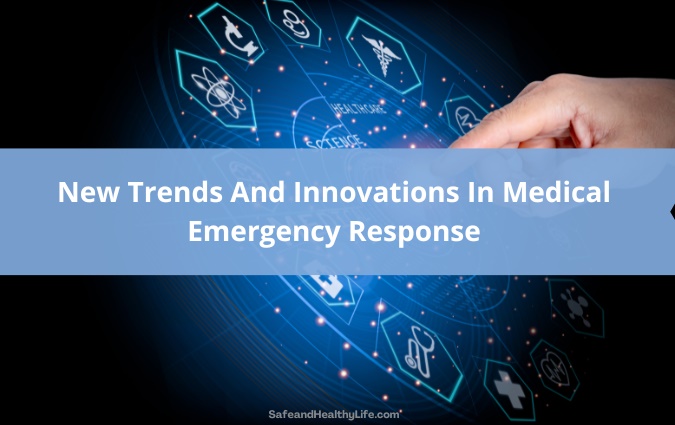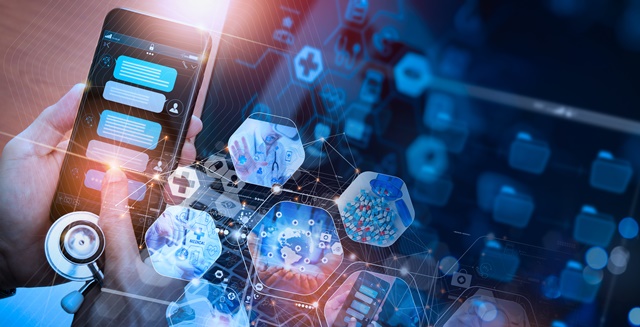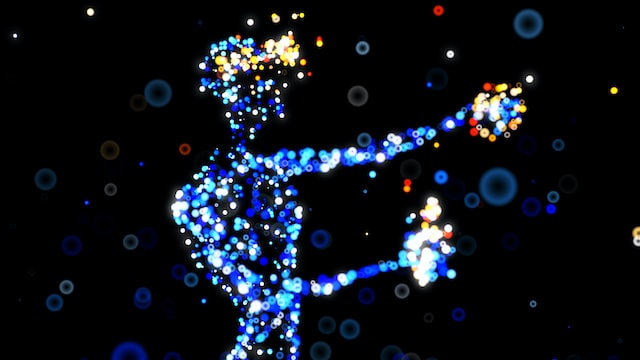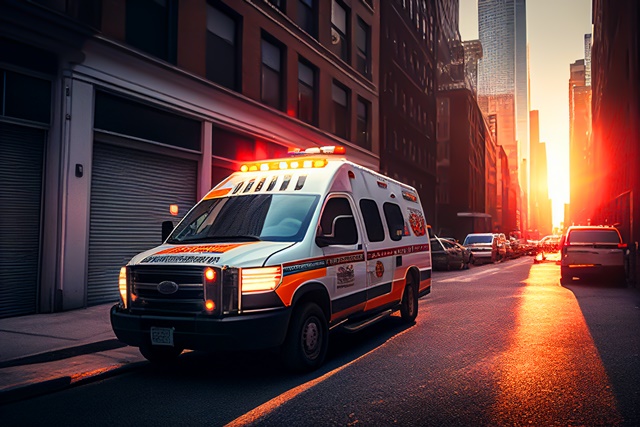
Medical emergency response is when medical professionals provide help to those in need during a critical situation. It may involve providing life-saving treatments and transporting patients to better-equipped hospitals or from one facility to another.
The process can also include performing Cardiopulmonary Resuscitation (CPR), administering medication, and stabilizing the patient until further treatment is available.
Keep in mind that emergency management is an ever-so-evolving field. Technological advancement enables faster response times, improved communication, and better treatment. This has great potential to save lives and improve patient outcomes.
Professionals are, therefore, required to stay up to date on these trends and innovations. This post will explore some top ones reshaping how medical emergencies are managed.
The Use Of Deployable Field Hospitals
A deployable field hospital is a mobile hospital that can be deployed on-site quickly and easily for victims of disasters and large-scale emergencies. They provide medical care and still help relieve pressure on existing health systems.
Field hospitals offer several other advantages over traditional medical centers:
- They’re more accessible, cost-effective, portable, and flexible to deploy in various locations;
- Deployable field hospitals require less setup time than brick-and-mortar buildings;
- And they support various treatments, including surgery, intensive care units (ICUs), laboratories, imaging services, and pharmacies.
Movable field hospitals represent an invaluable tool in emergency response. They’re a unique solution for areas where conventional healthcare centers aren’t available.
Artificial Intelligence (AI) Imaging
Artificial intelligence (AI) imaging technology is a type of medical imaging method that utilizes AI algorithms. It analyzes images from various sources, such as X-rays or CT scans.
AI imaging provides detailed information on internal organs. Traditionally you’d need several tastes to obtain these findings. Signs of injury or illness are detected before they become life-threatening emergencies too.
Further, AI imaging could drastically reduce the costs associated with diagnosing patients. At the same time, it provides more accurate results faster than traditional methods.
As this technology continues to improve, it’ll revolutionize how medical centers operate. There will be fewer errors by practitioners and shorter wait times for patients receiving treatment.
Using Geospatial Intelligence (GEOINT)
Geospatial intelligence (GEOINT) enables healthcare providers to access real-time location information about where people are. This technology can create 3D maps of an area from satellite imagery or other sources.
Then, through geolocation tracking systems, such as GPS tags placed onto ambulances, first responders identify areas that require urgent assistance. They can determine optimal routes to provide timely aid too. This enables medical emergency personnel to respond better when a disaster or an epidemic strike.
The Use of Advanced Communication Systems
Communication systems have become increasingly sophisticated in recent years. Today, medics use wireless radios to communicate and page each other.
In addition, patients and doctors communicate through mobile applications and websites.
Advanced communication systems have been valuable in speeding up sending and receiving alerts. This allows immediate response to emergencies.
Furthermore, the latest communication gadgets help ensure that teams quickly connect and share critical information on time to reduce the duration of treatment.
Multiple healthcare facilities can use these platforms to coordinate care during an emergency.
Internet Of Things (IoT)

The Internet of Things (IoT) is another technology that has grown significantly. It has made its way into many aspects of everyday life, yet it’s proving useful in healthcare settings too.
IoT-enabled devices can be implanted into patients’ bodies and connected to their smartphones or wearable technology devices. These gadgets continuously monitor vital signs and other health metrics, relaying the data to a centralized hub.
Here, it’s analyzed by AI algorithms to check for any abnormalities. Once detected, the medic can respond swiftly before the problem escalates.
For instance, Emergency Medical Services (EMS) providers can use wearables to detect an irregular heartbeat. The increased reaction time, in this case, will be decreased as opposed to before the technology.
Hence, the patient’s chances of survival are increased.
Using Big Data And Analytics
The trend of big data and analytics is just beginning to make waves within the healthcare industry. It allows providers access to vast information about patient health patterns and trends.
This information is helpful in developing strategies for more efficient care models.
Similarly, when a patient can’t describe their condition to the doctor in an emergency, the practitioner could study their health record and present a technology-aided diagnosis where appropriate.
Advanced Robotics
Robotics has been used in healthcare settings for many years. Nonetheless, its capabilities are growing exponentially as technology advances.
Robots are designed with features such as sensors, cameras, and AI algorithms that allow them to assist where necessary.
Today, they’re being used to allow caregivers access to unprecedented control over treatment delivery times. Also, robots are being utilized for things like wound management due to their precision and accuracy.
Robotic-assisted surgeries, for example, are complex procedures deemed too difficult for human surgeons to do on their own.
Robots may one day take on more proactive roles, such as autonomously performing search and rescue missions. These features would significantly reduce response times and efficiency compared to traditional methods.
Immersive Technologies

It’s said that many healthcare providers have adopted immersive technologies such as virtual reality (VR) and augmented reality (AR) too. This is due to their ability to simulate real-world scenarios.
Immersive technologies allow medical personnel to gain experience without risking patients’ lives. This allows them time to practice various procedures and sharpen their skills for responding in real situations.
Additionally, immersive technologies can also help to reduce response times. Personnel can quickly access vital information without perusing physical records or manuals.
And they provide a more realistic experience of the environment surrounding the patient during an emergency.
The utilization of immersive technology allows healthcare professionals to identify potential hazards or risks that may not be visible from a traditional two-dimensional perspective.
This further enables them to assess the situation better and make faster response and treatment decisions.
The Use Of Medical Drones
Drones have become increasingly popular within the last few years, thanks to advancements in drone engineering. They’re lightweight and reliable enough to deliver urgent supplies, medicine, blood samples, and defibrillators in remote locations.
Drones do so quickly and safely during disasters or emergencies where traditional methods may prove too slow or impossible.
For instance, drones are being used to transport medical supplies during an emergency. They allow personnel on the ground to get an accurate picture of what is happening at any given moment.
This is essential to ensure medics don’t have to risk their safety by going into dangerous locations themselves.
In addition, if paramedics needed blood samples urgently, they could deploy a drone with special equipment toward the destination point to collect the required specimen before returning safely.
Utilizing Driverless Ambulances

Finally, ambulances that can drive themselves are becoming an exciting new trend emerging from the medical emergencies field.
These autonomous vehicles can be programmed with predetermined routes and destinations, allowing them to transport patients quickly. They adhere to traffic laws and regulations and navigate terrain safely too.
Driverless ambulance technology is still in its infancy, yet it’s already shown promise for reducing human error during patient transportation. All this is thanks to their high-tech navigation systems that ensure no mistakes are made.
Summary
Emergency management continues to evolve rapidly, with new technologies being developed almost daily. The bottom line is all novel technologies play an essential role in helping healthcare providers respond better when disaster strikes.
The abovementioned trends are just a few examples of how medical technological advancements are leveraged in emergency services. They help the needy can receive timely help and recover swiftly from their ailments.
About The Author:
Silvia Olive is a healthcare professional. She writes blog posts and guest posts to share his knowledge and expertise with others. Silvia loves listening to music and playing guitar in her free time.


![[Infographic] International Migration Trends Infographic](https://www.safeandhealthylife.com/wp-content/uploads/2017/03/Infographic.png)
